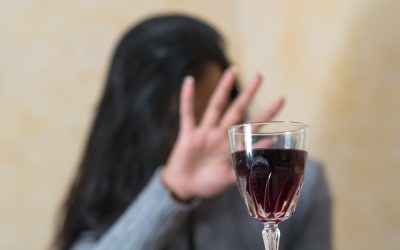Contents
The Joint Commission for the Accreditation of Healthcare Organizations evaluates quality of care provided by healthcare organizations. Footprints has the Gold Seal of Approval, which is the highest standard. The National Association of Addiction Treatment Providers is a nonprofit professional society designed to offer support to organizations across the continuum of care. Recovery groups like SMART Recovery or 12-step-based Alcoholics Anonymous. Poor self-care – You’ve been slacking on the things you know keep you well and feeling stronger in sobriety.
What happens if you don’t go to rehab?
Since criminal offenders usually agree to court-ordered rehab in exchange for jail time and hefty fines, a violation may result in immediate incarceration, large fines, and/or increased sentencing time.
St. John’s Recovery Place isnow working overtimeto educate the public on alcohol addiction and its symptoms. 85% of all Americans with some form of alcohol abuse disorder have relapsed at https://en.forexrobotron.info/ some point in their lives. 7.2% of all those those who were in recovery from an alcohol abuse disorder in the United States have relapsed when they reached their fifth year of recovery.
This book that is still used today incorporates the philosophy of AA as well as the famous 12 steps this fellowship uses to overcome addiction. Studies show that Alcoholics Anonymous , a support group that helps people with drinking problems, does work for many participants. The Scientific American writes that a study was conducted with 900 people suffering from alcoholism.
How Does Alcohol Affect Your Period?
Many people go on to misuse alcohol and other drugs after they fall prey to temptation. Thus, the longer you maintain sobriety after initial recovery, the higher the chances you won’t relapse. Involvement in alumni programs from the alcohol rehab you attended. Continued care like individual therapy, group therapy, family therapy, and psychiatry appointments for medication management. This transformation leads to withdrawal symptoms and intense cravings for alcohol when changing your habits.

When it comes to treatment after a relapse, we must evaluate what isn’t working for them and why and revise their recovery strategy accordingly. Handle heavy-drinking friends who will try to undermine the patient’s sobriety. Unfortunately for many cryptocurrency enthusiasts who have endured losses, the impact will be felt far beyond financial loss as it may result in various relationship issues, mental health challenges, and ultimately suicide. Marlowe DB, Merikle EP, Kirby KC, Festinger DS, McLellan AT. Multidimensional assessment of perceived treatmententry pressures among substance abusers. Armor DJ, Meshkoff JE. Remission among treated and untreated alcoholics. Give up or cut back on essential or enjoyable activities that give you pleasure to spend more time drinking.
If you suspect you may have a drinking problem, now is a great time to seek alcohol addiction treatment. 10% of all Americans with an alcohol use disorder who join a 12 step recovery program are sober living house able to stop drinking long term. 34% of all Americans with an alcohol use disorder will have an least one or more physical relapses during the process of recovering from alcohol abuse disorder.
Admission Line and explanation of convenient private phone and free prescreening. Since AA is a faith-based program, it would work better for those who have a devotion to religion. About 12% of Native Americans suffer from a drinking problem.
Camelback Recovery
While relapse can and does happen, it by no means signals that all is lost. A relapse can reinforce coping skills and strengthen the resolve to find long-term recovery. The first stage of relapse happens before an addict really considers abusing harmful substances again. Anxiety, moodiness and anger are common feelings during this time, and they’re most likely experiencing a lack of a support system. It’s a three-part process that starts in the mind and gradually leads to the physical act of relapse.

It means moving beyond understanding that addiction is a chronic disease to a deep acceptance that living in recovery requires life-long, daily vigilance. The most common cause of relapse is failure to use coping strategies. There were some interactions between the help groups and the baseline variables in predicting remission . Less severe problems and better coping skills were more predictive of remission in the no help than in the helped group. Moreover, compared to individuals who remitted with help, individuals who remitted without help had fewer problems or more resources on each of these indices. Major life events do come along in everyone’s life and will challenge a lawyer’s recovery even when there is a carefully thought-out relapse management plan.
Best Ways to Avoid Relapse
This could mean mapping out where you will go, who you will be with, how much you will drink, and when you will do it. This is your last chance to prevent relapse before it happens. Call your sponsor, tell a loved one, or return to an alcohol treatment program.

From day one, Ria Health has offered support for the Sinclair Method—a medication-based approach to moderate drinking or abstinence with a 78 percent success rate. Ria Health offers several FDA-approved medications for alcohol use disorder. When combined with counseling, this approach is proven highly effective.
27% of all Americans with an alcohol use disorder will have a relapse because of financial problems. 34% of all Americans with an alcohol use disorder will have a relapse because of peer pressure. 40% of all Americans with an alcohol use disorder attribute their failure to overcome alcoholism to lack of willpower. 36% of Americans who are suffering from alcoholic pancreatitis alcohol use disorder are going to recover after one year of treatment by a professional. 41% of alcohol dependent individuals in the United States were able to able to avoid alcohol after a year if they went treatment lasting for at least a week or longer. There are plenty of alcohol relapses that occur in the U.S. and around the world each year.
How Crisis & Isolation Can Lead to Drug and Alcohol Relapse
Something like a stressful job or rejoining a social circle that’s not respectful of your sobriety can make it more difficult to resist having a drink, especially when you’re not used to a sober routine. For people with longer-term recovery, outsiders can see more clearly the behavioral changes and warning signs that coincide with relapse, like someone suddenly disappearing from their home-group Twelve Step meeting. For a fuller list of behavioral changes, see the warning signs listed below. Relapse is total dysfunction, where a person has continually engaged in a pattern of thoughts or behaviors that destabilizes recovery and makes the use of alcohol or other drugs appealing.
- Natural remission may be followed by a high likelihood of relapse; thus, preventive interventions may be indicated to forestall future alcohol problems among individuals who cut down temporarily on drinking on their own.
- This finding probably reflects the fact that our sample was composed of individuals who had never been in treatment before and were at a relatively early stage in their alcoholism careers.
- The final stage of relapse is the physical act of drinking or doing drugs.
- Some of the typical warning signs in early recovery may be denial of addiction, craving , and euphoric recall (remembering only the positive experiences of previous alcohol and/or drug use).
- However, how you deal with these thoughts and cravings determines whether you’ll return to alcohol consumption and abuse.
- This study found that more of the public embraces a neurobiological understanding of mental illness, which translates into support for services but not necessarily into a decrease in stigma.
The most common mistake physicians make is assuming too soon that the patient is stable. Ask patients about attendance at AA meetings and about their relationships with their sponsors. Among patients who have been sober for 2 years, the relapse rate is 40%. Patients who have been sober for 5 years are likely to remain sober, but they are still at risk for relapse.
Another problem is that patients are not required to finish their treatment program; they can leave at any time. As a result, many recovering addicts don’t get the help they need. Programs like 12-step support groups, group therapy and motivational interviewing can help patients maintain sobriety and make them less likely to relapse. When a person receives treatment for addiction to any substance, relapse is common, but alcohol relapse rates are thought to be much higher than in other substance use disorders.
Is 3 days rest too much?
“However, following long periods of extensive exercise, the body's metabolic system may be stressed to its limit, therefore it is advised for anywhere from a minimum of 3-7 days of complete rest, hydration and sleep.
This figure, however, does not represent every person who has completed treatment. It is important to understand the high probability of relapse and learn the proper tools to maintain sobriety. When someone completes a recovery program, many people believe their journey is complete. However, successful management of their newfound recovery is a lifelong journey. Addiction affects the brain by introducing it to chemicals that it will continue to crave; this is why a surprising number of people relapse. People seeking recovery need to be reassured that they are not the first to relapse and they won’t be the last; many have done so and gone onto long-term recovery.
The Number 1 Reason People Fail Dry January, and Fail Sobriety In General
When people stop drinking or using drugs, the brain does not return to normal. But with treatment and AA, these people learn to manage the resulting symptoms. They manage stress with prayer and meditation and by living life one day at a time.
What can I drink for faster recovery?
- Water. That's right, water.
- Chocolate milk. It's not just for kids!
- Fruit juices.
- Fruit smoothies.
- Sports drinks.
- Coconut water.
- Vegetable juices.
- Green tea.
A priority for future research is to find out why individuals who recognize their alcohol problems and initiate help seeking do not obtain timely help. Access to convenient, low intensity interventions could enhance the self-change process and enable such individuals to achieve and maintain remission. Our findings on the benefits of relatively rapid entry into treatment and/or AA support the value of strengthening the referral process for individuals who recognize their alcohol problems and initiate help-seeking.
AA has been around since before the 1940s and has helped many women achieve sobriety. Good support and the right mentality is a crucial part of recovery. AA certainly provides that to those who decide to join the fellowship. Approximately 18% of recovering alcoholics achieved low-risk drinking after a year.